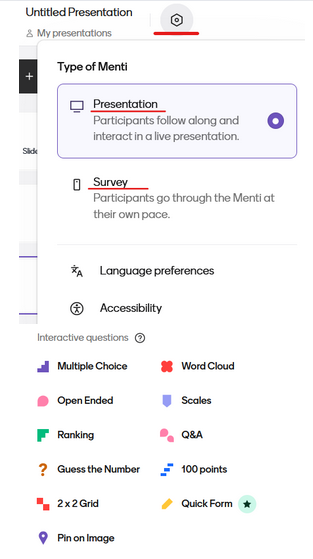Mentimeter [on the Web]
Attractive tool for live voting during a presentation
There are a number of web-based tools on the market for live voting. At the TU Darmstadt, the use of PINGO is common. Mentimeter is another tool that is being used often in the university environment and, compared to PINGO for example, stands out in particular for its attractive design and greater variety of question types. With the “Quiz” function, playful use is also possible.
In contrast to PINGO, Mentimeter is a paid tool. But, there is a free version that offers a wide range of functions. However, this version is limited to 50 participants per month. If this is not sufficient, further price levels are available (incl. ‘Educational pricing’) or the Particify tool could be an alternative, as it also offers several different question types that can be designed to be visually appealing.
Due to its attractive design and presentation character, Mentimeter is also suitable for students, e.g. to make the presentation of a topic attractive.
Get to know Mentimeter
Recommended external content
We have selected external content from YouTube for you and would like to show it to you right here. To do this, you must reveal it with one click. You can hide the external content at any time with another click.
I agree to external content from YouTube being shown to me. This may result in personal data being transmitted to third-party platforms. You can find more information in our Privacy Policy.
Short Youtube tutorial on creating your first Mentimeter presentation as well as other Mentimeter tutorials on Youtube.
(Source: https://www.youtube.com/watch?v=VpbXY98R39c (opens in new tab))
This tool is a suggestion to facilitate the digital daily work in teaching and studying. It is freely available on the web and can be used free of charge (at least in a basic version). Since it is not provided centrally by the TU Darmstadt, we would like to point out that you are responsible for checking your own data protection. Tip: Have a look at our orientation for the assessment of digital tools with regard to data protection.
If you have any doubts, please ask the colleagues in the data protection department (in German)


